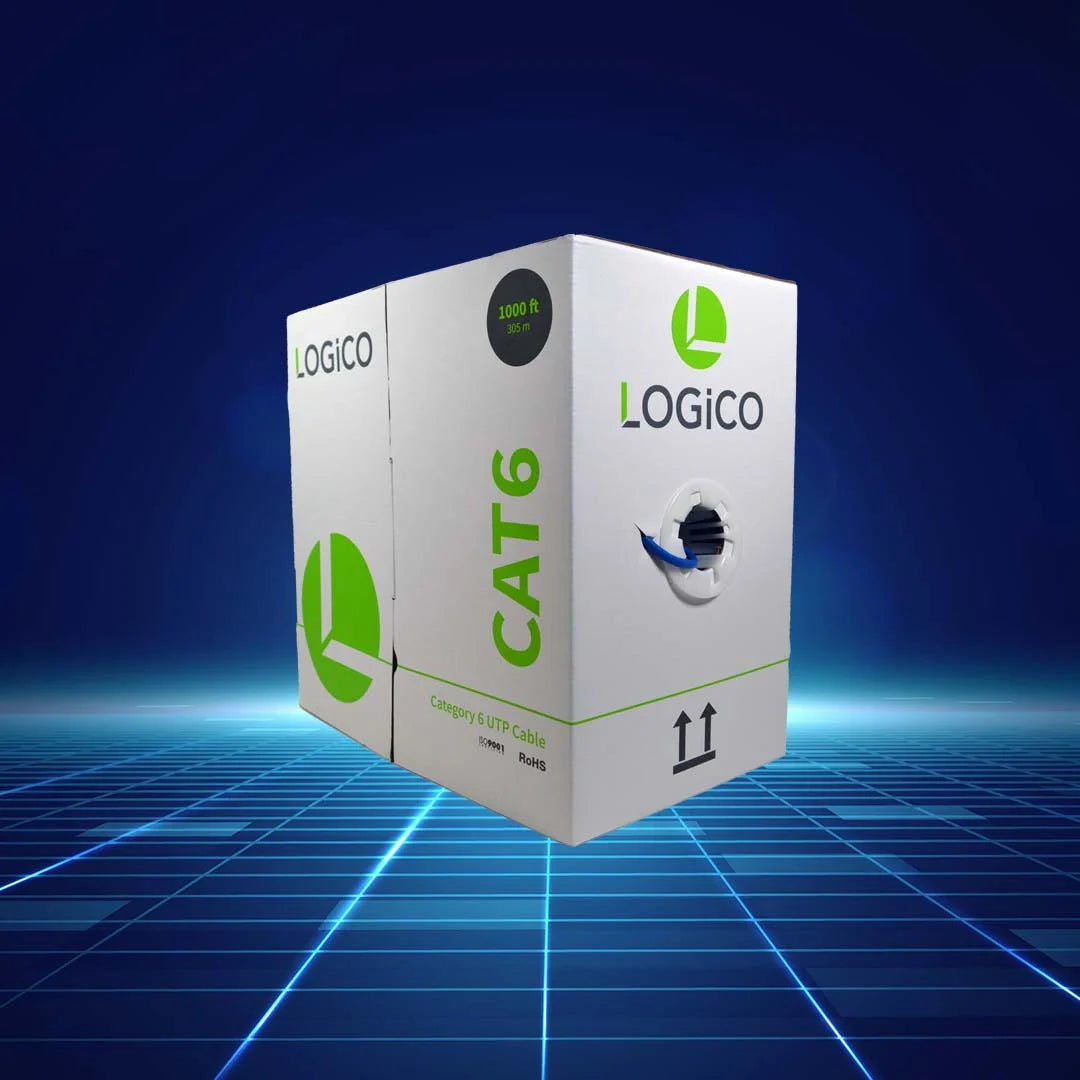You have no items in your shopping cart.

A cable bulk to join wired networks is an Ethernet cable. Bulk Ethernet cable (up to 1000 ft) is used to establish a network to interconnect numerous computers (possibly in separate rooms) and other gadgets to a server, typically in offices and other establishments. To put it differently, bulk Ethernet cable suggests a substantial amount of cable rather than merely a few feet.
A bulk Ethernet cable consists of a conductor, insulation, and cable jacket, with four twisted pairs of copper. Compared to standard network cables, bulk Ethernet cable lacks connectors, differing only in length and outer package. A 1000-foot roll is a typical example.
Bulk Ethernet Cables, often referred to simply as Ethernet cables, play a pivotal role in connecting various devices within a local area network (LAN) or a wide area network (WAN). These cables are designed to transmit data signals with high efficiency and minimal interference, ensuring a smooth and uninterrupted flow of information. Bulk Ethernet Cables are commonly used in a wide range of applications, including office networks, data centers, home networks, industrial automation, security systems, and more.
Bulk Ethernet Cables come in different types, each designed to meet specific performance requirements and environmental conditions. The most common types of Bulk Ethernet Cables include:
Cat5e Bulk Ethernet Cables: Cat5e (Category 5e) cables are among the most widely used Ethernet cables. They provide reliable performance for basic networking needs and are suitable for applications with data rates up to 1 Gbps. Cat5e cables are cost-effective and are often used in small to medium-sized businesses and residential setups.
Cat6 Bulk Ethernet Cables: Cat6 (Category 6) cables offer enhanced performance compared to Cat5e cables. They support higher data rates, typically up to 10 Gbps, and provide better resistance to crosstalk and interference. Cat6 cables are commonly used in environments where higher bandwidth and performance are required, such as larger offices and data centers.
Cat6a Bulk Ethernet Cables: Cat6a (Category 6a) cables are an advancement over Cat6 cables, offering even higher data rates and better immunity to noise and interference. They are capable of supporting data rates up to 10 Gbps over longer distances, making them suitable for high-performance applications.
Cat7 Bulk Ethernet Cables: Cat7 (Category 7) cables take performance to the next level. They provide exceptional shielding and are designed to support data rates up to 10 Gbps over longer distances with reduced signal degradation. Cat7 cables are often used in demanding environments where reliability and high bandwidth are critical.
Cat8 Bulk Ethernet Cables: Cat8 (Category 8) cables represent the latest in Ethernet cable technology. They are designed to support data rates of up to 25 Gbps or even 40 Gbps over shorter distances. Cat8 cables are ideal for data centers, high-performance computing, and applications requiring ultra-fast connections.
Bulk Ethernet Cables find application in a wide range of scenarios, contributing to the efficient functioning of various industries and sectors:
Office Networks: In office environments, Bulk Ethernet Cables connect computers, printers, servers, and other devices to facilitate seamless communication and data sharing among employees.
Data Centers: Data centers rely heavily on high-speed and reliable connectivity, making Bulk Ethernet Cables an essential component for linking servers, storage systems, and networking equipment.
Home Networks: Ethernet cables are commonly used in homes to connect devices like computers, smart TVs, gaming consoles, and Wi-Fi routers to ensure stable and fast internet connections.
Industrial Automation: Industries utilize Bulk Ethernet Cables to establish robust connections between machinery, sensors, and controllers in automated processes, enhancing efficiency and precision.
Security Systems: Surveillance cameras, access control systems, and alarms often rely on Ethernet cables for transmitting video feeds and data to monitoring centers.
Educational Institutions: Bulk Ethernet Cables support educational institutions by connecting classrooms, labs, and administrative areas, enabling efficient sharing of resources and information.
Healthcare: Ethernet cables play a role in healthcare settings, connecting medical equipment, electronic health records, and communication systems.
Entertainment Venues: Concert halls, theaters, and sports arenas utilize Bulk Ethernet Cables for ticketing, audiovisual equipment, and communication networks.
Factors to Consider When Choosing Bulk Ethernet Cables
Selecting the right Bulk Ethernet Cables is crucial to ensure optimal performance and longevity. Here are some factors to consider:
Cable Category: Choose the appropriate cable category based on your required data rates and network specifications. Cat5e, Cat6, Cat6a, Cat7, and Cat8 cables offer varying levels of performance.
Cable Length: Consider the distance between devices that need to be connected. Different cable categories have different maximum allowable distances for optimal performance.
Shielding: Shielding helps protect Ethernet signals from external interference. For environments with high electromagnetic interference (EMI), choose cables with better shielding.
Installation Environment: Consider factors such as temperature, moisture, and exposure to chemicals when selecting cables. Outdoor or industrial installations may require cables with specialized jackets.
Cost vs. Performance: Balance your budget with performance requirements. While higher-category cables offer better performance, they may come at a higher cost.
Future-Proofing: Anticipate future needs and technology advancements. Investing in higher-performance cables may provide room for scalability as network demands increase.
Connector Types: Ethernet cables come with different connector types, such as RJ45, which is the standard for most applications. Ensure compatibility with your devices.
Indoor Bulk Ethernet cables are normally used in buildings/factories and outdoor ones are designed for outdoor conditions, the difference being the outer jacket is designed to withstand the elements.
Outdoor Direct Burial Bulk Ethernet Cables are Shielded Cat6 waterproof direct burial cables, with a double outer jacket for underground use, which provides a high bandwidth (up to 550 MHz) and fast (1000mbps) connection for home or work, even in harsh conditions.